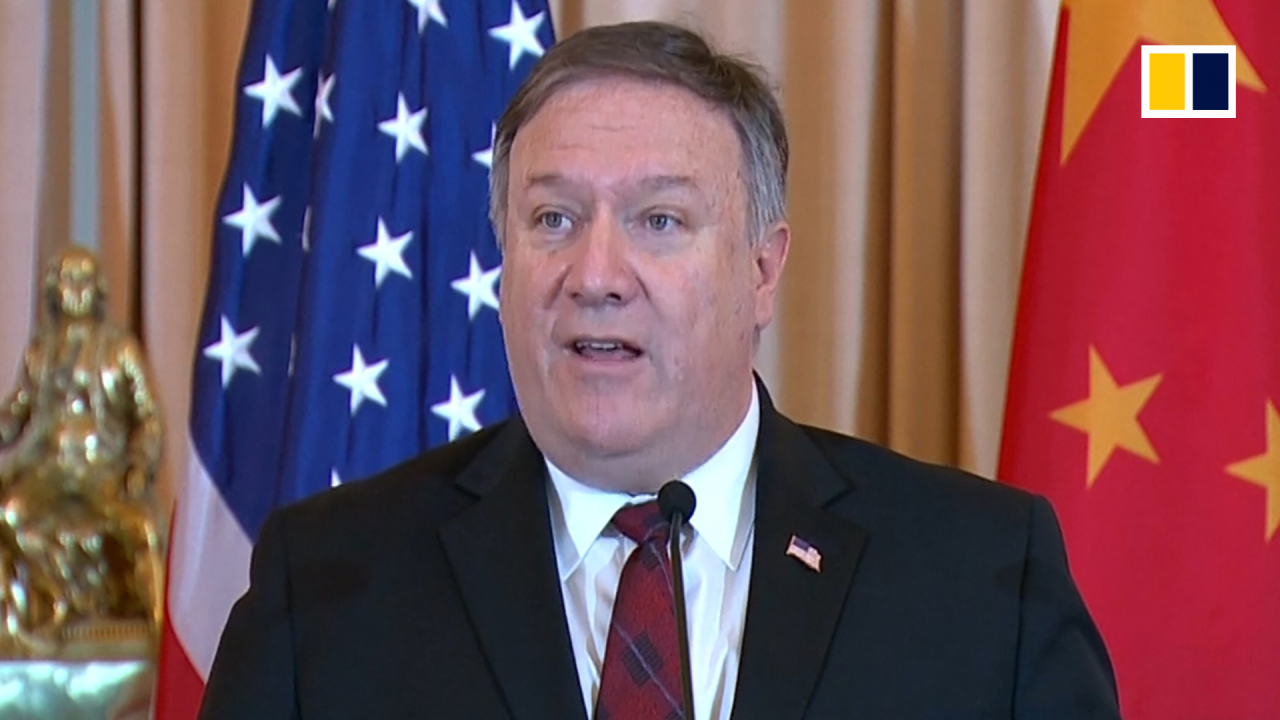
China, US unlikely to have military conflict, Chinese think tank says
- Contact between the two militaries has helped to prevent political disputes leading to misunderstandings, it reports
- Top US military officer is known to have made calls to reassure his Chinese counterpart in the final months of Donald Trump’s presidency
Defence and maritime experts also said extensive interaction between the two militaries over the years had helped to ensure restraint rather than either instigating aggression.
The US Navy has for more than a decade tended to use an Arleigh Burke guided-missile destroyer to conduct freedom of navigation operations (FONOPs) in the disputed waters despite having more powerful amphibious expeditionary strike groups in the region, said the report, released on Thursday.

01:59
US presses China to halt militarisation of South China Sea
“The USS amphibious fleets are in the South China Sea, but they never take part in the FONOPs in the region,” it said, adding the Americans had actually scaled down their military presence in the region during the Covid-19 pandemic.
The US has kept at least two aircraft carrier strike groups in the region to monitor the Chinese navy because of concern over Beijing’s assertiveness in the Taiwan Strait and the South China Sea.
Collin Koh, a maritime security analyst with Singapore’s S Rajaratnam School of International Studies, said sending an Arleigh Burke guided-missile destroyer was the best option for the US.
“Doing FONOPs ought to be accomplished with minimal yet credible effort – without unnecessarily detracting from other equally if not more important missions,” he said.
Tian Shichen, director of the Centre for International Law of Military Operation in Beijing, said neither side was aiming to start an armed conflict.
“In the South China Sea, the US military tends to adopt strategic deterrence and tactical provocation to put pressure [on Chinese counterparts],” he said.
Koh said interaction between the two militaries had been “safe and professional”, as required by the Code for Unplanned Encounters at Sea, agreed in 2014.
What are rival claimants building on South China Sea islands and reefs?
“The [US and Chinese] crews exchange radio calls and even engage in informal conversations to kill the boredom and monotony of operations out there,” he said.
Lu Li-shih, a former instructor at Taiwan’s naval academy, said the American FONOPs were aimed at expressing opposition to China turning reefs in the disputed South China Sea into artificial islands for military purposes – not at initiating a war.
“We can see both the People’s Liberation Army [PLA] and their American counterparts have restrained themselves very well, even when tension between Beijing and Washington was soaring late last year during the US presidential election.”
A source close to the PLA told the South China Morning Post that the Chinese had maintained contact with the American military by various channels to prevent any misjudgments.
“The US military was worrying that the PLA would raise its combat-readiness to its highest level while the Americans were voting, which would increase the risk of military conflict,” said the source, who requested anonymity because of the matter’s sensitivity.

